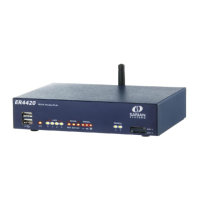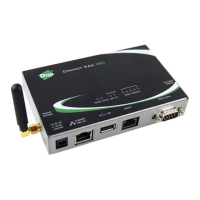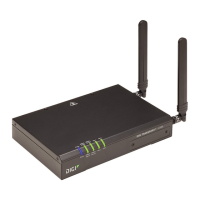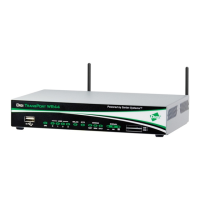Virtual Private Networks (VPN) L2TPv3 Ethernet
IX10 User Guide
461
3. Click VPN > L2TPv3 ethernet.
4. For Add L2TPv3 ethernet tunnel, type a name for the tunnel and click .
5. For Remote endpoint, type the IPv4 address of the remote endpoint.
6. For Local endpoint, select the interface that will be the local endpoint.
7. For Tunnel ID, type the tunnel identifier for this tunnel. This must match the value for Peer
tunnel ID on the remote peer. Allowed value is any integer between 1 and 4294967295.
8. For Peer tunnel ID, type the Tunnel IDof the remote peer.
9. (Optional) For Encapsulation type, select either UDPor IP. If UDPis selected:
a. For UDPsource port, type the number of the source UDPport to be used for the tunnel.
b. For UDPdestination port, type the number of the destination UDPport to be used for the
tunnel.
c. (Optional) Click to enable UDPchecksum to calculate and check the UDP checksum.
10. Click to expand Sessions.
a. For Add Sesssion, type a name for a session carried by the parent tunnel and click .
b. For Session ID, type the session identifier for this session. This must match the value for
Peer session ID on the remote peer. Allowed value is any integer between 1 and
4294967295.
c. For Peer session ID, type the Session IDof the remote peer.
d. (Optional) For Cookie, type the cookie value to be assigned to the session. Allowed value is
8 or 16 hex digits.
e. (Optional) For Peer cookie, type the Cookievalue of the remote peer.
f. For Layer2SpecificHeader type, select the Layer2Specific header type. This must match
what is configured on the remote peer.
g. For Sequence numbering control, determine the sequence number control to prevent or
detect out of order packets. Allowed values are:
n
None: No sequence numbering.
n
Send: Add a sequence number to each outgoing packet.
n
Receive: Reorder packets if they are received out of order.
n
Both: Add a sequence number to each outgoing packet, and reorder packets if they
are received out of order.
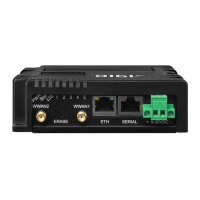
